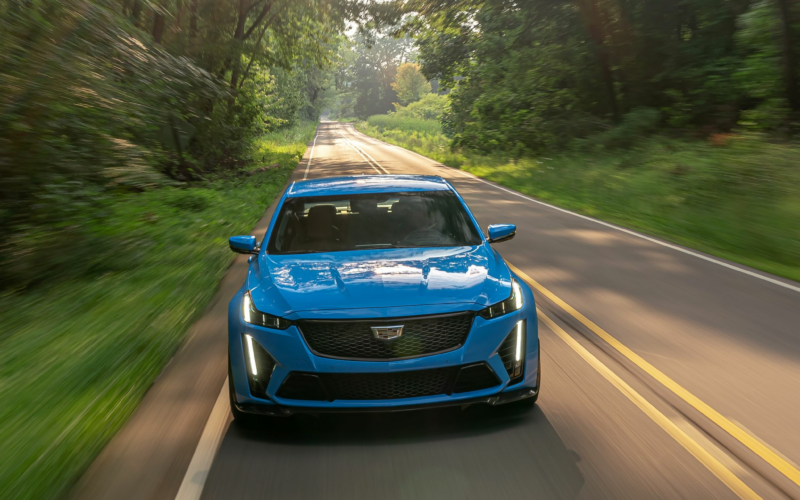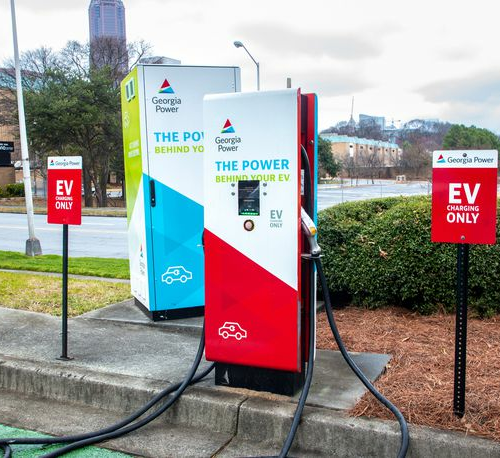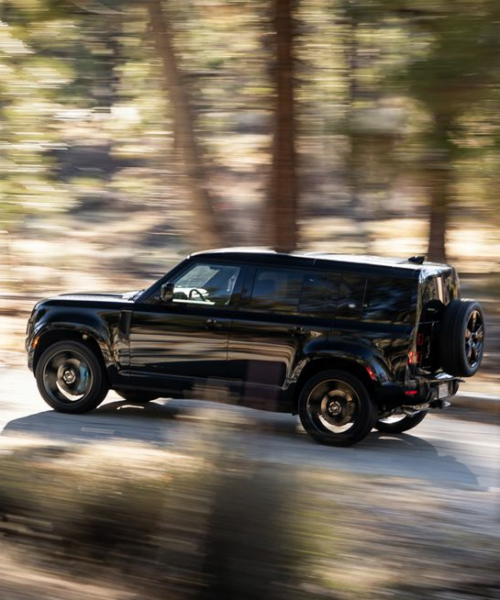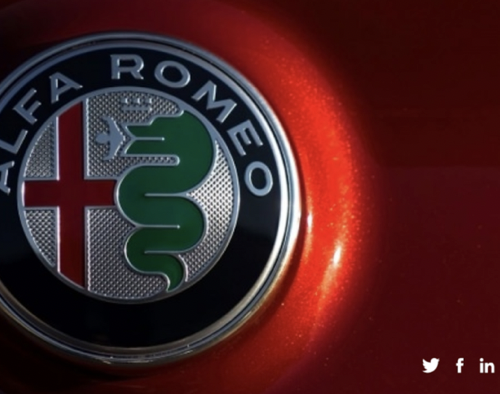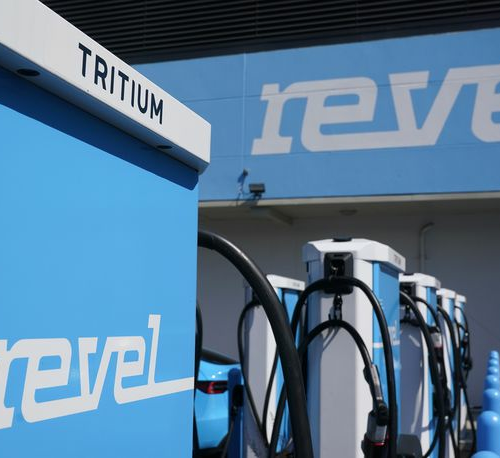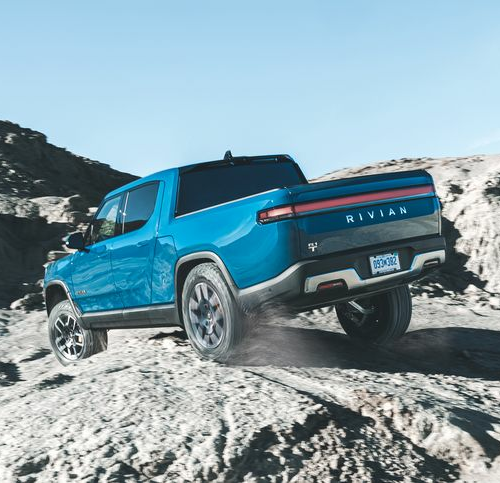BY K.C. COLWELL | CarAndDriver.Com
Troy Warren for CNT #Cars
If you want a new rear-drive sports sedan with a supercharged V-8 and a manual transmission, go get a Cadillac CT5-V Blackwing before it disappears forever.
The Norse myth of Ragnarök tells of a massive battle that takes the lives of several gods and destroys the world in a cataclysmic flood. What follows is a rebirth that brings something better. One era ends and a new one begins. Bad things happen, but be hopeful and pass the lutefisk.
You can think of Cadillac’s CT4-V Blackwing and CT5-V Blackwing—the final gas-powered sedans to wear a V badge—as the last of the old guard. Like deities in Ragnarök, they head into a hopeless battle, knowing they’ll be the last of their kind. And in short order, the coming flood of electric vehicles will assure their demise and change the automotive landscape forever.

HIGHS: The pinnacle of sports sedans, as fun to drive as a Porsche 911.
Electrics may be quick, and we might even grow to love them, but they don’t give you goose bumps the way the CT5-V Blackwing’s exhaust reverberating against a pit wall does. There is no doubt that enthusiasts will remember the bigger, badder Blackwing as one of the best sports sedans ever made. Years after it’s gone, its legend will live on.
Before you accuse us of getting carried away, consider that the segment is filled with all-wheel-drive sedans with turbocharged engines and automatic transmissions. Cadillac is the exception. It doubled down on rear-wheel drive, the manual gearbox, and sports-car dynamics.
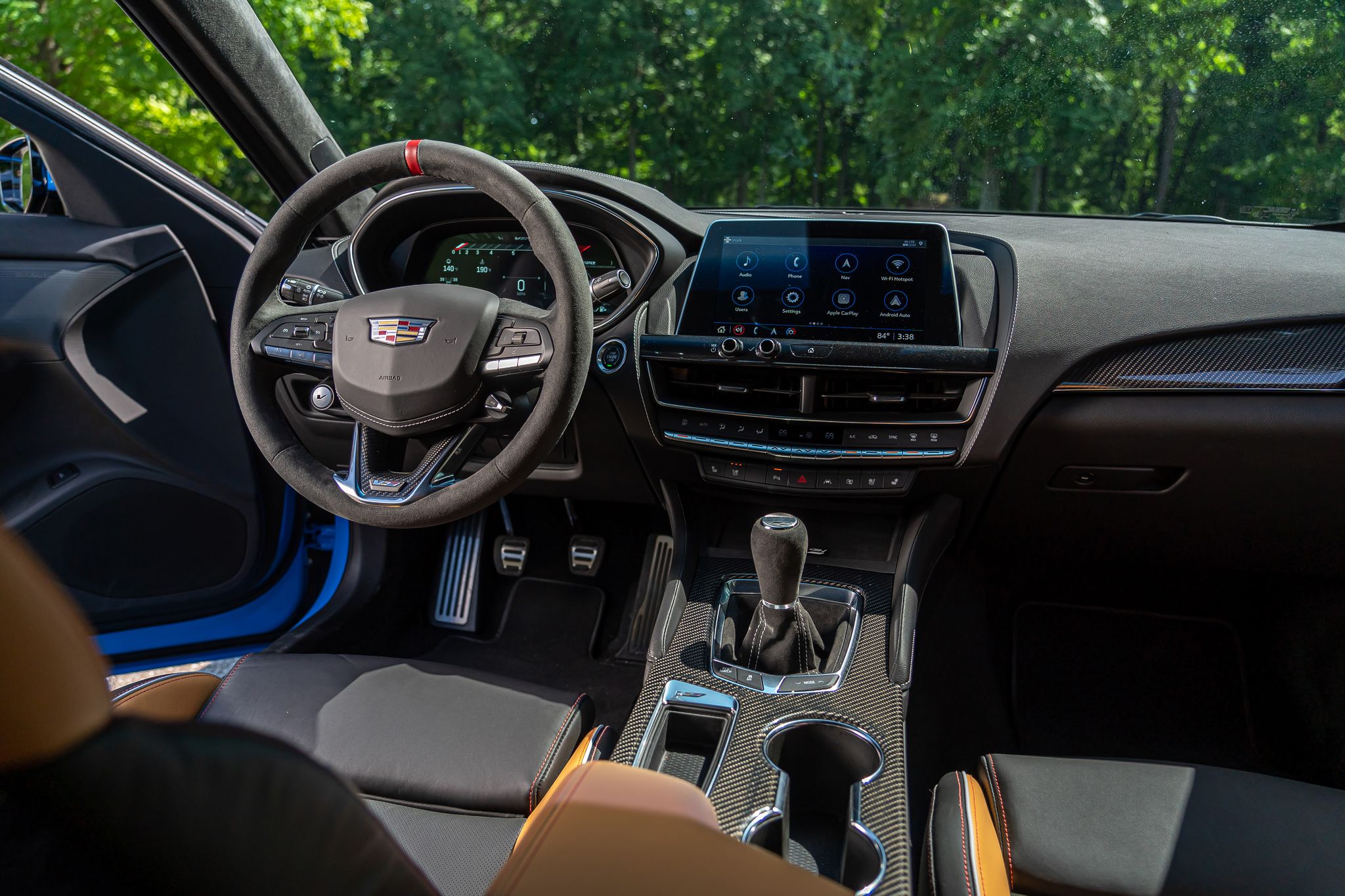
The Blackwing offers an automatic, and it’s a performance option, not just one of convenience. We have yet to test the 10-speed slushbox—effectively a $2775 option given that the auto mandates a $900 driver-assist package and carries a gas-guzzler tax of $1700 to the manual’s $2100 tariff—but we’re confident it will be quicker than the row-it-yourself six-speed. We don’t care. The manual shifter glides precisely through perfectly weighted detents and not-too-narrow gate spacing. It’s the one we lust for, what speculators will hoard and collectors will want.

The enthusiast special starts at $87,090. Skip the heavy sunroof and check all the boxes aimed at saving weight, such as the $9000 carbon-ceramic brakes. Compared with the standard rotors, the optional discs shed a claimed 62 pounds of rotating mass and 53 pounds of unsprung weight, improving the car’s acceleration, ride, and handling. With a full tank of premium, this sedan comes in at 4092 pounds.

LOWS: The thirst for premium will get expensive.
Another $9330 gets you (and our test car) the full carbon-fiber aero kit that is said to reduce lift by 85 percent, a great thing for a car that will likely hit 205 mph. (Caddy hasn’t validated the top speed yet, and we don’t have access to a facility that will allow us to safely test it ourselves.) Before you scoff at this CT5-V Blackwing’s $114,645 price, consider that adjusted for inflation, a 1987 Allanté would cost about $122,000. This is a much better deal.
The engine is as close to Thor’s hammer as the post-Norse world will know. Atop a pushrod 6.2-liter V-8 with titanium intake valves is an Eaton supercharger. Power peaks at 668 horses, and the engine spins to its 6500-rpm redline as if unencumbered by a flywheel. With 659 pound-feet of torque available, passengers won’t notice if you accidentally lug it in a higher-than-ideal gear. They will, however, notice if you rip off three redline shifts in a quarter-mile pass of 11.6 seconds at 125 mph. As one staffer’s spouse put it to him: “I don’t like you driving this car.” There isn’t higher praise from an auto reviewer’s better half.

VERDICT: After 18 years, Cadillac V succeeded in its goal of taking on and beating the world’s best sports sedan.
Getting to 60 mph takes 3.6 seconds. Keep your foot in it for 17.9 seconds (something you can do thanks to no-lift shift programming) and 150 mph arrives. Those yet to master heel-and-toeing will love the automatic rev matching on downshifts, but we love that you can turn it on or off at any time with a dedicated console button.
When it was time to slow down, six-piston calipers grabbed our test car’s optional 15.7-inch front rotors while four-pot binders squeezed the 14.6-inch rears. Based on our laps at Virginia International Raceway, we expected shorter stops from 70 and 100 mph than the Cadillac’s 154- and 321-foot showings. This is about the only area where the big Blackwing’s performance is merely good instead of great.
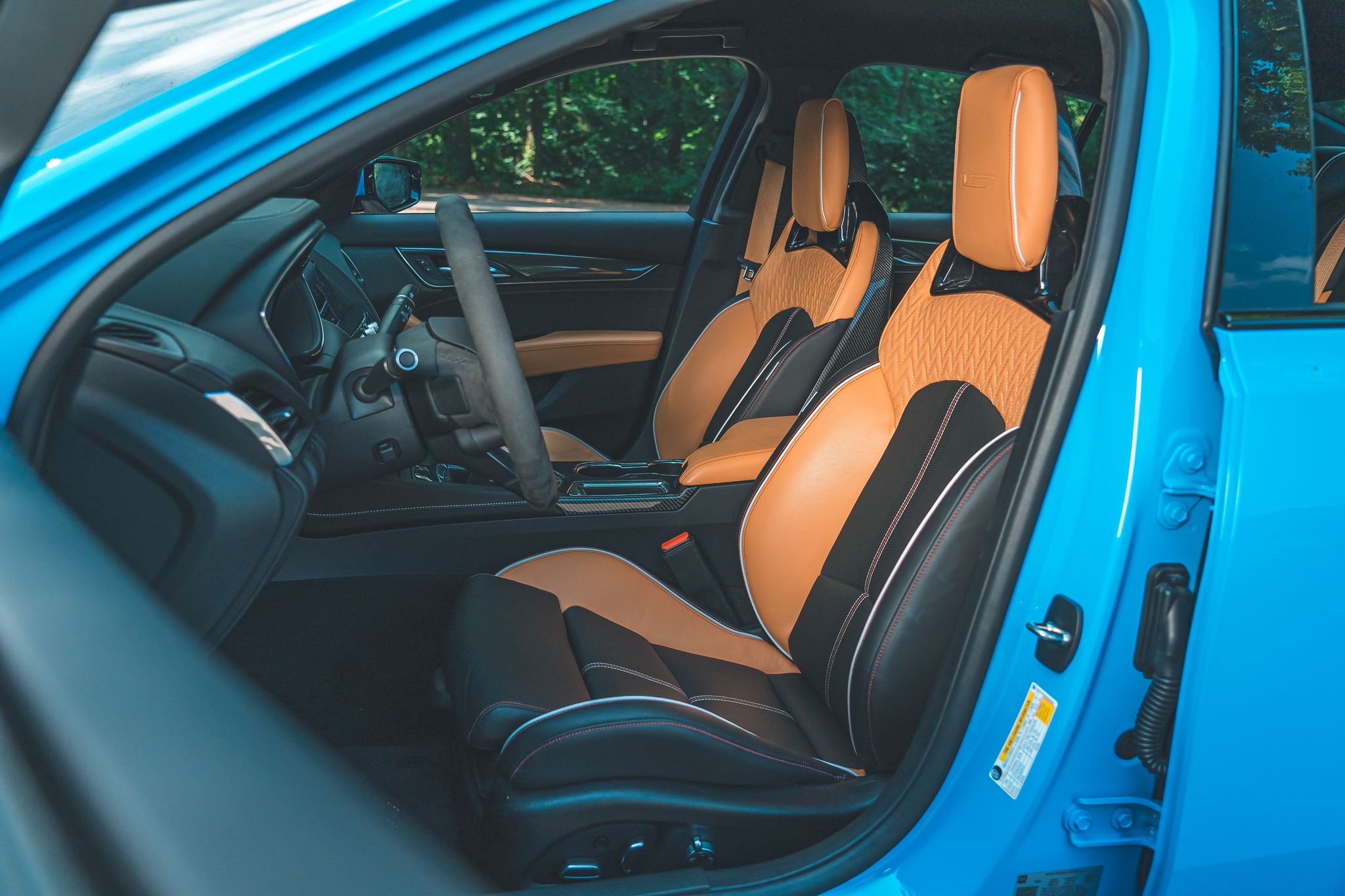
In every other way, it behaves like a much smaller car. Body motions are kept in check, the front-to-rear balance doesn’t overly stress the nose or tail in cornering, and every component works to hide the car’s heft from the driver. The chassis is daringly neutral, but meter in even a whiff too much power and the rear will step out in a controllable manner. Hold it at the limit and you’re turning at 1.02 g’s. Model-specific Michelin Pilot Sport 4S rubber, fitted on a decent stagger of 275/35ZR-19 in front and 305/30ZR-19 in back, deserves credit too. Compared with off-the-shelf 4S tires, these include the polymer magic of Michelin’s track-attack Cup 2s. Both the steering and brakes are electrically assisted, but you’d never know from the natural efforts and I-can’t-believe-it’s-not-analog control feel.
General Motors’ latest magnetorheological dampers can read and react to inputs 1000 times a second and will automatically change the ride as the task demands. Leave the suspension alone; it’s clever enough to trick Grandma into thinking this is her DeVille. A four-step variable exhaust system takes the V-8’s operatic voice from pianissimo to fortissimo, though even in the quietest setting the cabin hums with 73 decibels at 70 mph and hits 87 with a wide-open throttle. It’ll even spike to 90 decibels with the exhaust in its most unneighborly mode. Mercedes’s engineers will envy the Blackwing’s ride quality, while Porsche’s will be in awe of how engaging the car is to drive. No one will envy the fuel economy. We averaged 13 mpg.

Cycle among the four driver-selectable settings and you’ll notice a change in ride quality, steering heft, and engine sound. There are also two configurable modes to store your secret sauce, but Tour works well on all roads, proving that great chassis engineers know a great setup. Giving owners the freedom to tailor settings is one place where Cadillac followed the competition, but it didn’t need to. It’s just as possible that a million monkeys with typewriters will eventually write Shakespeare as it is that an owner will find something better than the settings GM chassis engineers created.
Those same engineers dialed in the Performance Traction Management (PTM) software that uses varying degrees of stability- and traction-control intervention to provide track drivers with a safety net. Cadillac’s development drivers used the most permissive mode, Race 2, when setting times. At VIR, they chased the 2:49.3 lap the Mercedes-AMG GT63 S laid down at Lightning Lap a couple of years ago but came up 0.2 second short. The engineers made sure to tell us it was a preproduction car lapped in less-than-ideal conditions, their way of letting us know that we might do better.
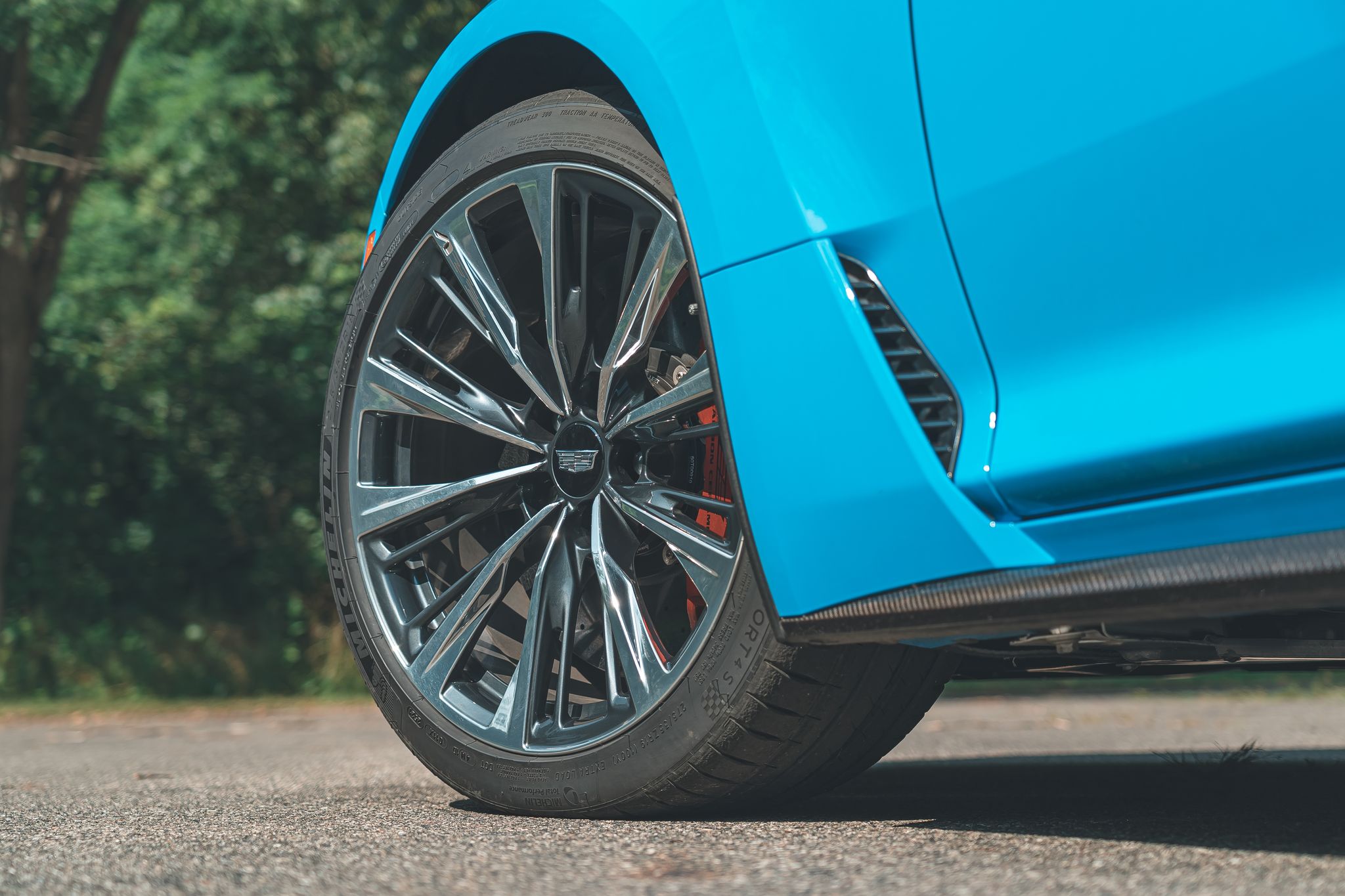
“Nobody sweats the details like GM” used to be an advertising tagline that nobody really believed. But it definitely applies to the CT5-V Blackwing. The grille mesh went through some 40 variations before engineers decided they’d achieved the best possible flow. And they prototyped, cut open, reworked, and resealed the mufflers countless times before finding this car’s intoxicating sound.
Driving the CT5-V Blackwing makes clear that it’s the sum of thousands of details, thoughtfully considered and executed. We’ll say it again: It’s one of the best sports sedans not only in recent memory but ever made. Buy one while you still can, before V succumbs to its own Ragnarök.

Counterpoint
K.C. Colwell challenged me to find something—anything—wrong with the CT5-V Blackwing. Shouldn’t be a problem; no car is perfect. But the great ones make you forget their shortcomings, and this Caddy is brilliant. In Tour mode, it reminds me of the E39 BMW M5: speed made creamy smooth, effortless, and comfortable. In Track mode, it conjures the wild-animal heart of the Mercedes-AMG GT63 S. Forget its bland interior design and garish seat inserts and armrests. What’s wrong is that the CT5-V Blackwing is the end of the line. Wrong, wrong, wrong! —Rich Ceppos
Part of having a great feature is making it known. Until the Blackwings’ steering-wheel toggle switch, GM’s PTM modes for track driving hid behind an overly complicated sequence of mode selection and button presses. Many owners probably never realized it existed. With the new setup, eager drivers can easily take advantage of the five PTM modes, much as GM’s development drivers do when gunning for the quickest lap. —Dave VanderWerp
Specifications
2022 Cadillac CT5-V Blackwing
Vehicle Type: front-engine, rear-wheel-drive, 5-passenger, 4-door sedan
PRICE
Base/As Tested: Base/As Tested: $87,090 /$114,645
Options: carbon-ceramic braking system with red calipers, $9000; tan and black semi-aniline leather seats with carbon-fiber seatbacks, $6090; carbon-fiber package 2, $5230; carbon-fiber package 1, $4100; performance data and video recorder, $1600; Electric Blue paint, $625; parking package, $610; faux-suede-wrapped steering wheel and shifter, $300
ENGINE
supercharged and intercooled V-8, aluminum block and heads, direct fuel injection
Displacement: 376 in3, 6162 cm3
Power: 668 hp @ 6500 rpm
Torque: 659 lb-ft @ 3600 rpm
TRANSMISSION
6-speed manual
CHASSIS
Suspension, F/R: struts/multilink
Brakes, F/R: 15.7-inch vented, cross-drilled, carbon-ceramic disc/14.6-inch vented, cross-drilled, carbon-ceramic disc
Tires: Michelin Pilot Sport 4S
F: 275/35ZR-19 (100Y) TPC
R: 305/30ZR-19 (102Y) TPC
DIMENSIONS
Wheelbase: 116.0 in
Length: 194.9 in
Width: 74.1 in
Height: 56.6 in
Passenger Volume: 98 ft3
Trunk Volume: 12 ft3
Curb Weight: 4092 lb
C/D TEST RESULTS
60 mph: 3.6 sec
100 mph: 7.7 sec
1/4-Mile: 11.6 sec @ 125 mph
130 mph: 12.4 sec
160 mph: 21.1 sec
Results above omit 1-ft rollout of 0.3 sec.
Rolling Start, 5–60 mph: 4.3 sec
Top Gear, 30–50 mph: 7.6 sec
Top Gear, 50–70 mph: 6.2 sec
Top Speed (C/D est): 205 mph
Braking, 70–0 mph: 154 ft
Braking, 100–0 mph: 321 ft
Roadholding, 300-ft Skidpad: 1.02 g
C/D FUEL ECONOMY
Observed: 13 mpg
75-mph Highway Driving: 24 mpg
Highway Range: 410 mi
EPA FUEL ECONOMY
Combined/City/Highway: 15/13/21 mpg
In Other NEWS


























